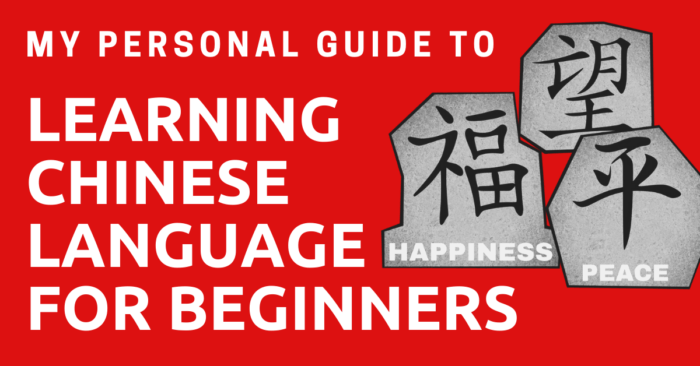
The thought of learning Chinese will likely both intrigue you and frighten you, considering that it’s one of the hardest languages to learn in the world, with thousands of unique characters and four tones.
It is the most spoken language in the world and because of that, as challenging as it is, learning Chinese comes with huge benefits.
In this article, I’m going to share my tips and tricks that I, as a young American woman, used to become fluent in Chinese.
If you want to start learning Chinese right away, I recommend ChineseClass101.
This article will take approximately 27 minutes to read. Don't have the time right now? No worries. You can email the ad-free version of the article to yourself and read it later!
Disclaimer: This article may include links to products or services offered by ExpatDen’s partners, which give us commissions when you click on them. Although this may influence how they appear in the text, we only recommend solutions that we would use in your situation. Read more in our Advertising Disclosure.
Contents
About Me
I have been studying Mandarin Chinese for over ten years. I have visited China twice, worked in Shanghai, China at an event management company for a summer, and I have made many Chinese friends in my local community. I love studying Chinese, and I hope to help you understand why you should be excited about learning Chinese as well.
Why You Should Learn Mandarin Chinese
Learning Mandarin Chinese is an extremely useful skill to use both for your personal interests and for your career. Mandarin Chinese is one of the most spoken languages in the world with over 1 billion native speakers.
Any career, especially in business or political science, will be greatly enhanced by being able to communicate in Chinese, even if it’s only at an intermediate level. Many people end up moving to China to teach English, going to China on business trips, or traveling there for fun. Your time in China will be much more enjoyable if you can communicate with its citizens.
Studying a second (or third, or fourth) language not only expands your mind, but it helps you develop a stronger mastery of your primary language. Those who can speak multiple languages enjoy advanced cognitive abilities, an improved memory, and increased attention span.
Finally, learning Mandarin will impress your friends and family as well as yourself. Many people perceive Chinese as a difficult language, and therefore they are more impressed by someone learning Chinese than someone learning a Latin language.
You will also amaze yourself as you begin to have simple conversations and write sentences with Chinese characters.
How Difficult is it?
Chinese is famous for being a difficult language to learn. I won’t lie and pretend learning Chinese is a breeze, but once you understand how the language works, you will pick it up quickly. It is daunting to initially learn Chinese, especially when the grammar structure, tones, and writing are so different from your own language.
However, you will find that it is easy to start to build your vocabulary and communicate using simple sentences.
One of my favorite aspects of the Chinese language is that there are no conjugations. Gone are the days of French or Spanish class where you had to learn how to conjugate lists of verbs. In Chinese, the verb will always stay the same regardless of the pronoun. There are also no gender-specific nouns.
Chinese also does not have any tenses. Words will not change based on if it is a present, past, or future action.
Overall, learning Chinese will be a challenge, but it will not be as hard as you have been taught to believe!
About the Chinese Language
The Chinese language has multiple dialects, with Mandarin and Cantonese being the most popular. Mandarin is the official language of mainland China and Taiwan, with Cantonese being spoken more in Hong Kong and the province of Guangdong.
It is estimated that over 1.3 billion people in the world speak Mandarin Chinese as their first language. The number of Cantonese speakers is estimated to be around 66 million.
Although the two dialects sound different, both use the same written Chinese characters. However, these characters can be written in traditional style or simplified style. Commonly, in places where Cantonese is spoken, they also still use traditional written characters.
It is common that younger Chinese people who are educated in Mandarin Speaking areas of China might not be great at reading traditional characters which are more complex and have more strokes.
When discussing Chinese language in this article, we are referring to Mandarin Chinese and simplified characters, as they are the standard both in China and around the world.
The Kangxi Dictionary contains over 47,000 unique Chinese characters. But don’t freak out; you do not need to learn that many! Most of these characters are obsolete, rare, or regional variances.
To achieve basic literacy you will need to learn around 2,000 to 3,000 characters. To be considered fluent and to read a newspaper cover to cover, you should be able to recognise around 8000 characters. Chinese academics might be able to read and write up to 20,000 characters.
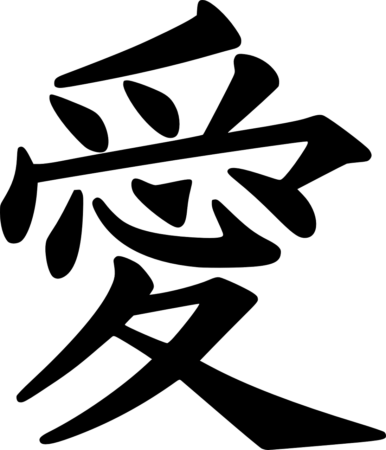
Each character is composed of one or more radicals. A radical is a common component in Chinese characters. They are essentially “pictures” that mean a specific thing. When you put multiple of them together in a certain order, they form a Chinese character.
Tones
Chinese is known as a tonal language. Mandarin Chinese has four tones plus one neutral tone. These four tones are imperative to speaking Chinese correctly. Using the incorrect tone can sometimes lead to miscommunication.
To help with language learning, Chinese can be written using a system known as pinyin, created in the 1950s, it combines the Roman alphabet with tone marks. Each Chinese character is a single syllable, and the tone affects the vowel in the syllable.
Pinyin is a good system and essential for computer/phone input systems, but it is not perfect. As you will see in the example of the word “ma” below, the Chinese characters are necessary for clarity. A Chinese learner must learn written Chinese.
Let’s look at the word “ma” as an example. The first tone is a high and level tone that looks like this: mā. The second tone is má which has a moderate rise in pitch. The third tone, mǎ, falls and then rises again in pitch, and the fourth is mà which is a tone that starts out high but drops sharply, almost angrily.
To the untrained ear these may sound the same, but each of these tones do sound different and each represents a different word.
- Mā (first Tone) 妈: mother
- Má (second Tone) 麻: hemp
- Má or Ma (second tone or neutral tone) 吗: question particle
- Mǎ (third Tone) 马: horse
- Mà (fourth Tone) 骂: scold
If you mix up the tones it isn’t the end of the world; Chinese people will understand through context and realize that you meant you rode horses on the weekend, not that you rode moms.
At other times though, using the incorrect tone can really add to confusion, so practicing speaking with the correct tones from the beginning is crucial.
Basic Sentence Structure
Chinese uses the same basic sentence structure as English: subject – verb – object. For example:
I eat apples = 我吃苹果 = Wǒ chī píngguǒ
We play a game = 我们玩游戏 = Wǒmen wán yóuxì
This is a great benefit for English speakers learning Chinese. You will be able to create sentences once you have some basic vocabulary.
But also note that Chinese is a flexible language, and the word order can be adjusted for emphasis or to convey specific meanings. Sometimes adverbs, adjectives, and other sentence elements can be placed before or after the subject, verb, or object.
One grammatical difference is that Chinese has no past, present, or future tenses. Instead, verb tenses are often indicated through context, time expressions, or auxiliary words.
The sentence structure with time becomes: subject – time – verb – object.
For example: 我昨天去了医院 = Wǒ zuótiān qùle yīyuàn = I yesterday went to hospital.
“Zuótiān” is the word for “yesterday” and putting the “了” (le) on the end of the word for “go” (去 qù) means the action is finished.
Particles
Particles play an important role in the Chinese language, as they are special characters added to the end of words or sentences to convey additional meaning. A frequently used particle is “ma” (吗) in a neutral tone, which is placed at the end of a sentence to turn it into a question.
The exclamation “This tastes good!” (好吃! Hǎo chī!) becomes the question “Does this taste good?” (好吃吗? Hǎo chī ma?)
There are many particles in Chinese which get added to the end of sentences to change the meaning. Here are a few more common ones.
- 呢 (ne) indicates a continuation of a previous topic or to ask for opinions.
Example: 你呢?(Nǐ ne?) – And you? - 吧 (ba) can soften a command or make a polite request.
Example: 坐下吧。(Zuò xià ba.) – Please have a seat. - 啊 (a) can express surprise or soften the tone of a sentence.
Example: 哦,是这样啊。(Ó, shì zhèyàng a.) – Oh, I see. - 的 (de) indicates possession or describe nouns.
Example: 我的书 (Wǒ de shū) – My book. - 了 (le) is used to indicate a completed action.
Example: 我吃饭了。(Wǒ chīfàn le.) – I have eaten. - 地 (de) can link an adverb to a verb.
Example: 快乐地笑 (Kuàilè de xiào) – Laugh happily.
Radicals
Radicals are strokes (of the pen) or groups of strokes, and the building blocks of Chinese characters. There are 214 Chinese radicals. These radicals are extremely useful to know because once you learn to recognize them, remembering how to write characters will become easier.
For example, 女 means female and can be found in words such as 姐(older sister), 妹(younger sister), and 妈 (mother).
The radical 饣(shí) is often referred to as the “food” radical. It appears in various Chinese characters related to food, cooking, or eating.
For example, the character 饭 (fàn) can mean “meal” and 饿 (è) means “hungry” and you can see the food radical on the left side of each character.
Chinese Proficiency Test (HSK)
China has developed a standardized Chinese proficiency test. There are six levels to it, and it is designed to test the Chinese language speaking, listening, and reading proficiency of non-native speakers.
This test is most useful to foreign students studying in China as well as those hoping to work in China. However ,many people take the test simply to test themselves and to know how far along they are in their path to fluency.
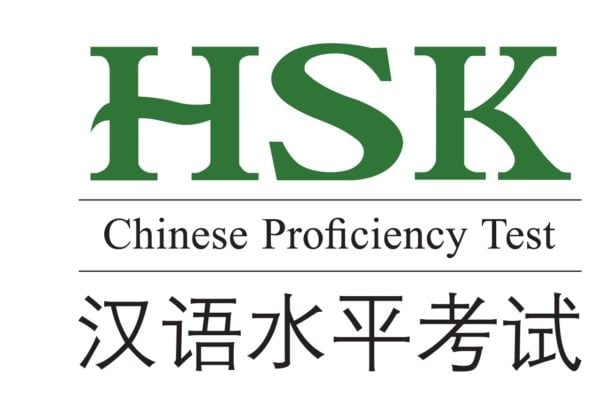
The first test level, HSK 1, tests how well an individual can understand and use very simple Chinese phrases. The first HSK test expects test-takers to know 150 words.
Each subsequent test expects the test-taker to know more and more words. The highest test, HSK 6, covers 5,000 words, and passing the HSK 6 exam means the individual can easily comprehend written and spoken information in Chinese. There are official lists of what words are needed for each exam, and the exams can be taken in most parts of the world.
Although I think the HSK exams are a valuable tool in assessing your knowledge and helping you to reach concrete goals, I believe the list of HSK words should not be the only ones studied, and that passing HSK 6 does not mean a person has finished learning Chinese.
I mention the HSK exams because for the rest of this article I will bring up HSK exam preparation and HSK levels.
Chinese Language Courses
Okay, now that you’ve decided to learn Chinese, here is a list of Chinese language courses including websites, textbooks, and apps. I will list both paid courses and free courses.
Online Courses:
ChineseClass101
Price: Subscriptions range from $8 to $47 a month; a free subscription includes a few lessons

ChineseClass101 offers thousands of lessons amongst four skill levels plus a bonus level.
Unlike other websites, it does not divide up skill levels by HSK. Each lesson includes a PDF with supplementary information. The lessons include video and audio lessons spread out over modules.
ChinesePod
Price: $29/month or $250 per year; limited number of free videos and content
ChinesePod is a video-based Chinese-learning website. Each of the video lessons is organized based on HSK level 1-6. One of the best reasons for signing up for ChinesePod is to take advantage of their “Say it Right” course.
In that multi-video course they speak with a Chinese linguistics scholar who outlines exactly how to pronounce tones. ChinesePod also has a set of free videos to watch on both their website and YouTube.
Mandarin Tutor
Price: $8-$15 per private lesson
Mandarin Tutor is an online service that provides native Chinese tutors to give you Skype lessons. The tutors range from teaching beginners to advanced speakers, and some even teach Cantonese.
They have a list of all of their tutors and their credentials, what levels they teach, and their rates. Your first 30-minute Skype tutoring session is free.
Pimsleur
Price: $575 Chinese Complete Course (Lifetime) or up to USD $20.95/month subscription
Pimsleur is a language learning program focused on developing Chinese conversational skills through their unique audio-based lessons. Classes focus on listening, responding, and repeating tones and patterns of speech in Chinese.
It is available on both the web and app with a variety of courses, ranging from Level 1 to Level 5, allowing learners to progress at their own pace. Each lesson typically lasts around 30 minutes. You can test it out for 7 days before committing to a subscription plan.
Rocket Chinese
Price: You can get all three levels of course for a one-time payment of USD $179.94 which gives you lifetime access to 451 hours of lessons.
Rocket Languages is an online platform and app that provides Mandarin courses. Their lessons are separated into three levels: beginner, intermediate, and advanced. It includes interactive audio lessons, language and culture lessons, and writing lessons.
Reviews say Rocket has some of the best structured lessons. They have a built-in voice recognition system to practice speaking and pronunciation. Vector animations to show the order of writing Chinese characters and detailed explanations of radicals in characters to help make it easier to remember. They also have a 60-day refund policy if you aren’t happy.
GoEast Mandarin
Price: Group classes start around $700 for 33 lessons; Free Trial Lesson Available. Pricing is not transparent; you have to ask for a quote for your specific needs on their website.
GoEast Mandarin is a professional language school based in Shanghai that offers online lessons for adults and children, both in groups and one-on-one.
Courses are organized into the HSK framework, but you can also customize your own with their language consultant.
The class itself is a 50-minute Zoom session where the teacher will go over a PowerPoint slide covering different skills based on your HSK level.
All teachers are highly qualified with university degrees and teaching experience. They also have an online platform where you can watch videos, do exercises, and review lessons.
Android and IOS Apps
Pleco
Price: Free
If you want to learn Chinese then you need to download this app right now. Pleco is a free dictionary that every Chinese language learner I’ve ever met uses. You can look up characters by typing the pinyin (roman letters of the pronunciation), writing the character, using the microphone, or searching in English.
Pleco also allows users to make their own flashcards as part of a paid add-on as well as download pre-made flashcard bundles from their database.
HelloChinese
Price: Free
HelloChinese markets itself towards total beginners. Similar to Duolingo and ChineseSkill, it is game based. It teaches reading, writing, grammar, and vocabulary. They especially emphasize handwriting to make learning Chinese characters an easier and faster experience.
Skritter
Price: Paid; Free Trial
Skritter’s focus is on learning to read and write Chinese characters. With a large dictionary of words to choose from, it’s played as a fast-paced game to see how quickly you can recognize and write new characters given to you.
It is a supplemental app to be used with other study material in order to improve your character recognition.
Mondly
Price: Paid; Free Trial
Mondly is a language learning app developed by Pearson education. It feels like a cross between Duolingo and Rosetta Stone. People like Mondly because it feels more like playing a mobile game than studying. There are daily lessons and lessons categorized based on topics such as family, travel, food, etc. Similarly, Mondly is a great supplemental app for reviewing and improving your Chinese vocabulary and grammar.
HelloTalk
Price: Free
HelloTalk is an app that allows you to chat with native speakers around the world. You can sign up for free, create your profile, and then start matching with Chinese-speakers who are hoping to learn English (or whichever language you are speaking) in return.
As you message each other, you can correct each other’s grammar.
You can make friends and have a non-stressful text conversation with as many people as you’d like. As there are many Chinese people hoping to learn English, you will find that there will be no shortage of Chinese speakers to chat with.
Flashcards
Flashcards are a great way to review vocabulary, characters, and grammar rules regularly. Here are some popular flashcard generators available online.
Quizlet
Price: Free
Quizlet is both a website and an app that allows you to create and take flashcard quizzes. You can also search for other quizzes that have already been created.
Brainscape
Price: Free & Subscription
Brainscape is another flashcard and study tool available online and apps. It offers a “smart-flashcard” feature that adjusts the repetition of the flashcard based on the user’s performance. You can also view other flashcards that have been created.
Textbooks
HSK Standard Course
The HSK Standard Course books range from HSK 1 to HSK 6. These books are just about as standard as you can get when it comes to learning HSK vocabulary. Each level contains only the words needed to be learned for that level’s exam.
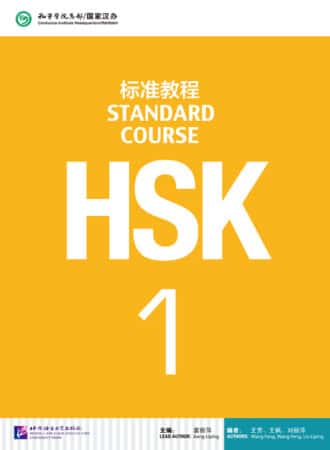
The textbook comes with a CD, and there are also workbooks you can buy. The HSK Standard Course is the textbook required by Chinese Zero to Hero.
Integrated Chinese
Integrated Chinese is one of the more widely-used textbooks. In addition to the textbook there is also a workbook and a character writing book where you can practice writing characters with the correct strokes. There are also digital files so you can listen to the audio of each textbook.
Additional Resources:
YouTube
YouTube has an abundance of videos teaching beginner and intermediate students Chinese. Watching vlogs or tutorials, such as Xiaoying Cuisine or Thomas Afu, can also help you get more immersed in Chinese culture while learning Chinese. Check out these examples:
Social Media
Facebook Watch, Instagram Reels and TikTok are easy ways to make your time scrolling social media a bit more productive. Just subscribe to Chinese learning content creators and get quick, easy lessons on your phone whenever you have a spare moment in the day. Check out these creators:
On TikTok:
@everydayeasychinese
@chinesemasterrr
@chinachinesee
On Facebook:
Yoyo Chinese
On Instagram:
@chinesemimi1
@chineseclass101
@chineseteacher_beauty
Podcasts
Podcasts are another great way to supplement your Chinese listening and vocabulary skills. There are hundreds of free ones available on Spotify or the Podcast app. The levels range from beginner to advanced. Check out these examples:
ChatGPT
Is there anything our new AI best friend can’t do? Our robot buddy has mastered the art of Chinese translation. The translations of both long pieces of writing and short, from English to Mandarin and the other way around are often flawless and a thousand percent better than the next best tool, Google Translate.
You can ask her to give you pinyin as well as English translations, you can even give her pinyin and some context and ask her to figure out what the chinese characters might be and she will do her best to help you out.
You can ask her for study advice, ask her to explain the nuances of Chinese language, and give her your written Chinese and ask her to proof and edit it for you. The possibilities are truly endless. I promise, ChatGPT did not write this glowing review!
Viki
Viki is a free website that offers hundreds of Asian TV shows. You can sort them by language and have Chinese or English subtitles. Some TV shows offer a learning version and have both Chinese and English subtitles.
Watching Chinese TV will help with your comprehension, improve your reading skills (as you read the subtitles), teach you new vocabulary, and allow you to better understand Chinese culture.
My favorite TV show on Contiki is “Love Me if You Dare,” which is an excellent mix of romance and murder-mystery.
Challenges of Learning Chinese
One of the biggest challenges of learning Chinese are the tones. Tones are hard to get used to. It is a challenge that most other languages do not have to deal with, and it can be a big adjustment for new learners.
As you learn new words, practice saying the tones out loud. Watch videos or listen to audio of native speakers using the words you are learning.
Another challenge with learning Chinese is that many people choose to skip over learning to read and write, especially for online learners. Although this is a good idea if you need to learn Chinese quickly, this is not the best idea in the long run.
When traveling in China, speaking Chinese will be extremely useful, but not being able to read will seriously hinder you while trying to order food at a restaurant or read signs. While visiting and later living in China I discovered that most foreigners living in China could not read or write Chinese.
Chinese citizens were pleasantly surprised to see that I, a young American woman, could not only speak Chinese, but could read as well. This made buying items, signing up for cell phone plans, and communicating with Chinese associates, landlords, and friends infinitely easier and faster. I highly recommend that each person who is learning Chinese learns to write at least 100 basic characters, and learns to recognize a few hundred more.
Best Way to Learn Chinese
Some people need to learn to speak Chinese quickly for an impending move to China.
Here are the steps to learn to speak Chinese quickly:
Learn to Read Pinyin
Learn to read pinyin. Pinyin is the Romanized approximation of how Chinese words are pronounced. There are certain rules for pinyin.
For example: the letter “Q” makes a sound similar to “ch.” The letter “C” makes a “ts” sound. The pinyin for the characters to say “hello,” – 你好 – is Nĭ hăo. Learning how to read and pronounce pinyin will be crucial for the next step.
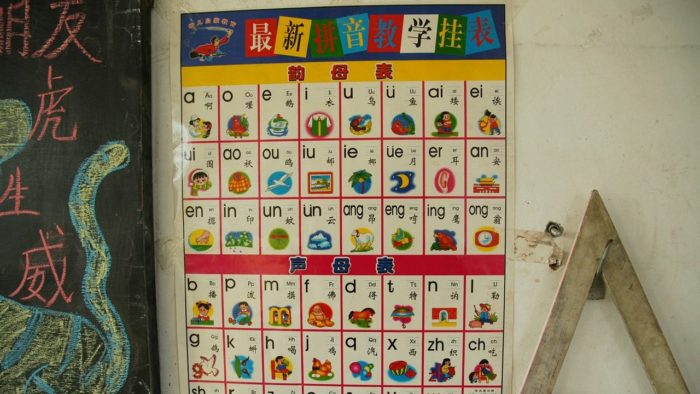
Get a Beginner’s Textbook
Either get a beginner’s textbook or make a list yourself of simple but important words to know. These words will include numbers, pronouns, transportation, months and days, time, occupations, food, conjunctions, verbs, etc. A good place to find these words will be HSK vocabulary lists.
Make Flashcards
Make a set of physical flashcards or digital ones on Quizlet. On one side write down the English word, and on the other side write the Chinese word in pinyin only (including tones). Watch videos and listen to audio to make sure you are pronouncing these words correctly, and then study these words in small groups over and over until you have them memorized.
Learn Grammar Structures
Once you have a good amount of words memorized, you will need to start learning basic grammar structures, learn how to use conjunctions in sentences, learn how to ask questions, and practice putting all of the words you have studied into sentences.
Practice Conversation
You need to find someone to practice having a conversation with. It will make no difference if you can speak 500 hundred words if you are unable to understand someone speaking Chinese. You will find endless options for online forums, social media groups, apps, and language meetups where you can practice Chinese and connect with fellow learners and native speakers. Here are a few popular platforms:
- Reddit: The subreddit r/ChineseLanguage is a community where people discuss Chinese language learning, share resources, and seek advice.
- HelloTalk: HelloTalk and other apps like it connect language learners worldwide. You can connect with Chinese speakers through messaging, voice calls, and even video chats.
- italki: italki is an online language learning platform that has language exchange partners and community features. You can connect with native Chinese speakers for casual language practice.
- Chinese Forums: Websites like Chinese-forums.com have active discussion threads where learners can ask questions, chat, and seek advice.
- Facebook Groups: There are numerous Chinese language learning groups like Learn Chinese中文学习 on Facebook where learners can interact, share resources, and practice Chinese together.
- Meetup: Meetup.com is a group events platform. You can search for Chinese language meetups in your area, like this popular Australian group, or even join virtual meetups for language practice and cultural exchange.
- Wechat: Download the WeChat app and then get connected. Connect with your friends and people in China and ask them to invite you to private language learning groups. Here are more tips about how WeChat can help you practice Mandarin.
Review and Learn New Words
Keep on reviewing old words, learning new words in small batches, practicing simple grammar patterns, and speaking with a native or near-fluent Chinese speaker.
As you follow this process and study very diligently and consistently, you will be able to converse within a matter of months.
This focuses mostly on a big vocabulary with only simple grammar patterns and no study at all of characters, and as such this should only be pursued when time is of the essence.
After the initial need to be able to speak quickly passes, you should go back and learn how to read and write some of the characters and begin learning more complex grammar patterns.
How to Learn to Read and Write
Finally I would like to share my method of learning to read and write. Of course this requires knowledge of vocabulary words. This is a process I have used for years to learn how to read and write hundreds of Chinese characters.
Before beginning to write, you need to learn the proper stroke order of writing characters.
Trying to write a Chinese character in the wrong order will be harder to write than if you follow the standardized method. Once you learn stroke order, you will be able to easily write any Chinese character you see without having to be shown how first. There are plenty of YouTube videos and textbooks that teach stroke order.
Once you have a basic understanding, then you can begin my method to learn to read and write:
- Get an iPad, writing tablet, or small whiteboard that you can easily write on and erase.
- Using your list of vocabulary words that you have already learned, divide them into groups of eight. Write each word in English on the left side of your whiteboard in a single column.
- To the right of each English word, carefully draw the Chinese character, being sure to use the correct stroke order and to draw it as neatly as possible. Write each one multiple times before moving on to the next character so that you can get used to writing it. Once you have written each character multiple times, erase each of the characters leaving only the English on the board.
- Attempt to write each character from memory to the right of the English word. Once you have written all of the characters, erase them and begin writing them again from memory. Keep on writing each one and then erasing over and over until you can write every character next to their English word in a row a few times without checking.
- Begin this same process over again with the next set of eight characters. Once you have those eight memorized then practice writing the first eight in addition to the newest eight all from memory. Do this until you have memorized anywhere from 16-40 words. Repeat the process the next day with new groups of words, and keep on reviewing old words. Eventually these will add up and you will soon have a good amount of characters memorized.
I have been doing this process for over ten years. When I first began, it took me close to an hour to memorize how to write eight characters.
Over time I got used to writing characters and soon it only took me 15 minutes to memorize each new batch of characters. This has added up to me being able to read and/or write well over 2,000 characters.
Now, on to You
Learning Chinese has been a rewarding experience for me, and I hope it will be for you as well. With these tips and resources I have laid out you can begin your journey of learning this beautiful language. Good luck! 祝你好运! Zhù nǐ hǎo yùn!








In the 1970 I studied Vietnamese at Point Cook, Victoria and I was then a linguist. I have wanted to learn Beijing language and studied for 1 year at Macquarie University. I would like to learn Chinese now. But what is the best way for me.